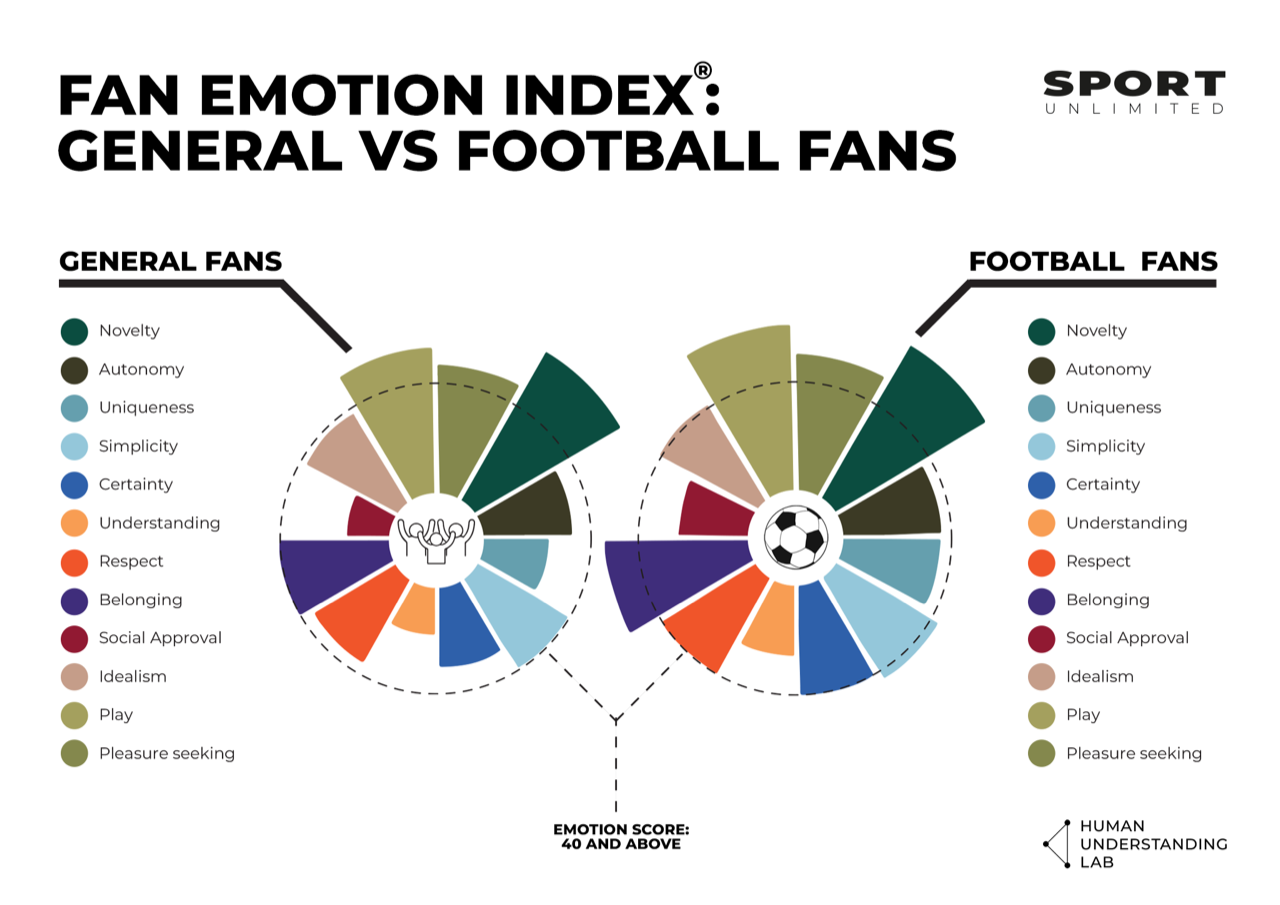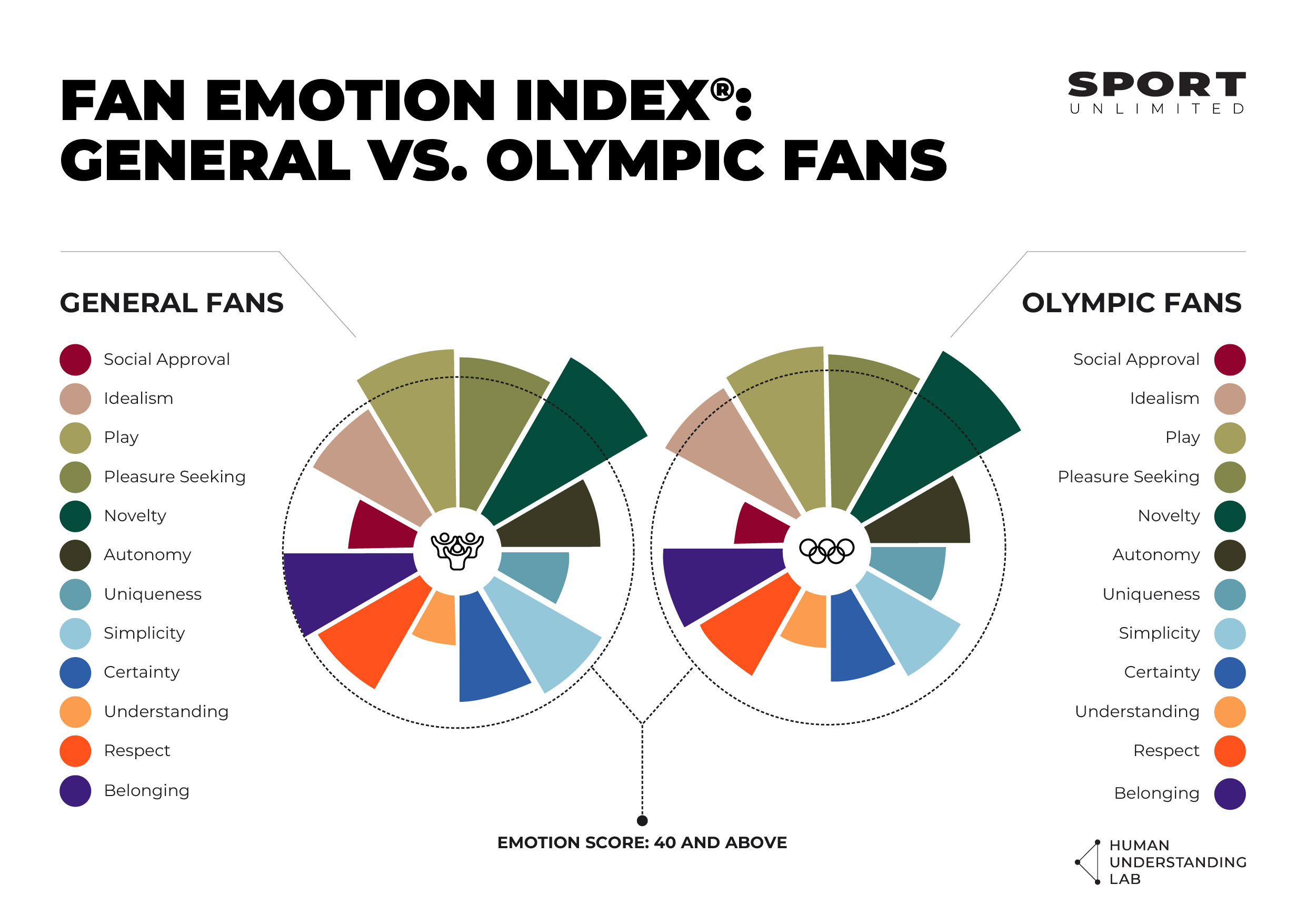Sporting Events | Sporting Events
A winning sporting calendar for 2024
by Sophie Marsh

When we think of sports ‘fandom’, we think of passionate crowds, in a stadium or glued to a TV or mobile phone, experiencing the emotional highs and lows of the sport they love.
But where does this sporting fandom come from?
Newborn babies aren’t born with an inherent love for watching a ball fly into a net, an athlete dash around a track, or a motor vehicle speed round a circuit. We aren’t born sports fans – we become them over time.
Our fandom develops out of a complex coalescence of experiences, memories, and influences.
Whether you’re an avid tennis aficionado, a die-hard Harlequins fan, or a keen follower of the Leah Williamsons and the Millie Brights of the WSL, there are subconscious emotional needs and motivations that drive that passion.
And if you can identify these implicit drivers as we can, they can fuel a strategy and a creative execution that delivers heightened levels of engagement with audiences.
Interested? Well, keep reading.
Sport UNLIMITED and our Human Understanding Lab™ have created our own proprietary insight tool, to dig into these emotional needs and motivations, that are triggered by sport.
This is called The Fan Emotion Index™.
The Fan Emotion Index™ goes beyond what fans ‘say’ and ‘do’, and measures how fans truly feel, and the ‘why’ behind their sporting fandom.
The Fan Emotion Index™ was created to identifying the subconscious implicit drivers of fandom.
We took our Human Understanding Lab’s existing Implicit Goals Model, which based on years of renowned psychology research lays out our key underlying human needs on a 12-segment wheel. And we applied it to sport fandom, aligning five questions to each segment to see how that implicit human need impacted fandom.
Using ‘reaction time testing’ to measure the speed at which responses are given ensures we only consider those coming from the automatic or implicit part of the brain i.e. we’re capturing only the subconcious emotions and motivations.
We surveyed a nationally representative sample across eight different sports and a multitude of different demographics, allowing us to see how fandom was nuanced between sports and different fan types.
We found, there were significant discrepancies between explicit and implicit answers, or put differently, discrepancies between what fans say, and what they really think.
Take winning for example:
Explicitly, respondents said winning was a key driver of their love of sports, however, implicitly these answers linked to ‘winning’ were below the 40% threshold and what we consider relevant.
So if it isn’t ‘winning’ that drives fandom, what is it? This is where the Fan Emotion Index™ starts to offer a new level of fan insight.
We uncovered four main emotional drivers of sport fandom:

We can apply our findings to general sports fans, but also cut the data by sport, gender and age to uncover the differences and nuances between each group of sports fans. The role or ‘strength’ of these different emotions changes on a sport by sport basis, and in many cases additional emotions play a role, such as ‘respect’ or ‘certainty’ in football fans, and ‘idealism’ in Olympic fans. And of course this is impacted demographically.
This insight informs our creative briefs and proposition to help drive action from our audiences.


As an agency, we encourage brands, rightsholders, and anyone who wants to harness the power of sporting fandom to really engage with these implicit emotional drivers of sporting fandom, through their marketing strategy. If you want to chat, or simply find out more about the Fan Emotion Index™, contact us here to book a free consultation.